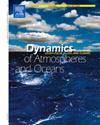Satellite-derived ocean color data for monitoring pCO2 dynamics in the North Indian Ocean
IF 2
4区 地球科学
Q2 GEOCHEMISTRY & GEOPHYSICS
引用次数: 0
Abstract
The partial pressure of carbon dioxide (pCO2) in the North Indian Ocean (NIO) undergoes significant variations due to factors such as biological activity, ocean circulation patterns, and atmospheric influences. Understanding these variations is crucial for assessing the ocean role in the global carbon cycle and their impact on climate change. Estimating pCO2 through in-situ platforms is challenging due to the time-consuming, expensive, and complex nature of water sample collection, particularly under rough oceanic conditions. Conversely, remote sensing technology offers high spatiotemporal resolution data over extensive synoptic scales, making it a valuable tool for pCO2 estimation. Current models for estimating pCO2 in the NIO region are limited due to the improper selection of model parameters and the scarcity of in-situ measurements, highlighting the need for a more accurate approach. This study develops a Multiparametric Linear Regression (MLR) method, integrating satellite and in-situ observations of sea surface temperature (SST), sea surface salinity (SSS), and chlorophyll-a (Chla) concentration. To develop and validate this model, in-situ data were sourced from the Global Ocean Data Analysis Project (GLODAP). Validation results showed that the proposed MLR approach outperformed existing global models, achieving low mean relative error (MRE = 0.08), mean normalized bias (MNB = 0.013), and root mean square error (RMSE = 7.26 μatm), with a high correlation coefficient (R2 = 0.96). This study has the potential to improve understanding of carbon dynamics in the NIO region and its contribution to the global carbon cycle. The pCO2 maps generated in this study improve climate modeling and monitoring, supporting predictions and mitigation efforts. This accurate model also aids policy-making, environmental management, and ecological assessments.
监测北印度洋二氧化碳分压动态的卫星海洋颜色数据
由于生物活动、海洋环流模式和大气影响等因素,北印度洋(NIO)的二氧化碳分压(pCO2)发生了显著变化。了解这些变化对于评估海洋在全球碳循环中的作用及其对气候变化的影响至关重要。由于水样采集的耗时、昂贵和复杂性,特别是在恶劣的海洋条件下,通过原位平台估算二氧化碳分压是具有挑战性的。相反,遥感技术提供了广泛天气尺度上的高时空分辨率数据,使其成为估算二氧化碳分压的宝贵工具。由于模型参数选择不当和缺乏原位测量,目前估算NIO地区二氧化碳分压的模型受到限制,因此需要更准确的方法。本研究利用卫星和现场观测资料对海表温度(SST)、海表盐度(SSS)和叶绿素a (Chla)浓度进行综合,建立了一种多参数线性回归(MLR)方法。为了开发和验证该模型,现场数据来自全球海洋数据分析项目(GLODAP)。验证结果表明,该方法优于现有的全局模型,平均相对误差(MRE = 0.08)、平均归一化偏差(MNB = 0.013)和均方根误差(RMSE = 7.26 μatm)均较低,相关系数(R2 = 0.96)较高。该研究具有提高对NIO地区碳动态及其对全球碳循环贡献的认识的潜力。本研究生成的二氧化碳分压图改进了气候建模和监测,支持了预测和缓解工作。这个准确的模型也有助于政策制定、环境管理和生态评估。
本文章由计算机程序翻译,如有差异,请以英文原文为准。
求助全文
约1分钟内获得全文
求助全文
来源期刊

Dynamics of Atmospheres and Oceans
地学-地球化学与地球物理
CiteScore
3.10
自引率
5.90%
发文量
43
审稿时长
>12 weeks
期刊介绍:
Dynamics of Atmospheres and Oceans is an international journal for research related to the dynamical and physical processes governing atmospheres, oceans and climate.
Authors are invited to submit articles, short contributions or scholarly reviews in the following areas:
•Dynamic meteorology
•Physical oceanography
•Geophysical fluid dynamics
•Climate variability and climate change
•Atmosphere-ocean-biosphere-cryosphere interactions
•Prediction and predictability
•Scale interactions
Papers of theoretical, computational, experimental and observational investigations are invited, particularly those that explore the fundamental nature - or bring together the interdisciplinary and multidisciplinary aspects - of dynamical and physical processes at all scales. Papers that explore air-sea interactions and the coupling between atmospheres, oceans, and other components of the climate system are particularly welcome.
 求助内容:
求助内容: 应助结果提醒方式:
应助结果提醒方式:


